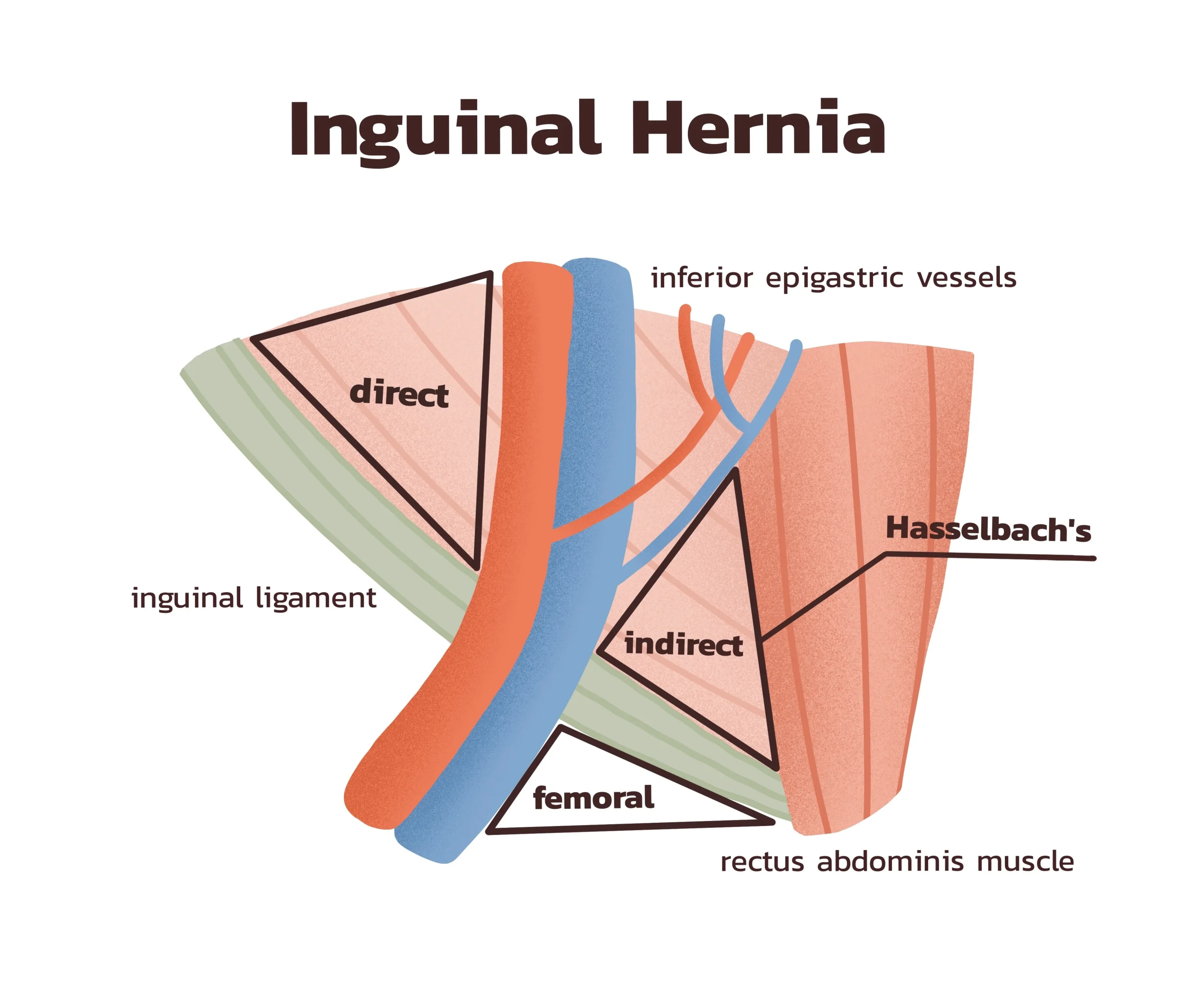Hernias
Inguinal and umbilical hernias are common types of hernias that occur when tissue or organs protrude through weak spots in the abdominal wall. Incisional hernias happen after previous surgeries.
Inguinal hernias, in the groin area, are the most common type of adult hernia. They develop when a portion of the intestine or abdominal lining protrude through a weakened area in the abdominal wall, usually near the inguinal canal. Risk factors for inguinal hernias include aging, male gender, family history, chronic coughing or straining, obesity, and pregnancy. Symptoms may include a bulge or swelling in the groin area, discomfort or pain, and a feeling of heaviness or pressure.
Umbilical hernias occur near the belly button or navel (umbilicus). In adults, they develop when a portion of the intestine or abdominal lining protrudes through a weakened area in the abdominal wall near the navel. Risk factors for umbilical hernias in adults include obesity, pregnancy, multiple pregnancies, and previous abdominal surgeries. Symptoms may include a visible bulge near the navel, pain, or discomfort.
Treatment
An acutely painful hernia needs urgent review, usually in the emergency department.
Both inguinal and umbilical hernias may require surgical repair. Surgery typically involves reducing the protruding tissue back into place and reinforcing the weakened area of the abdominal wall with stitches or a mesh patch to prevent recurrence. Inguinal hernia repair can be performed as open surgery or laparoscopically, while umbilical hernia repair is often done through a small incision near the belly button.
Learn More
Specialist Hernia Repair in Brisbane
Hernias can cause discomfort and restrict daily activities. Dr. Vasant Rajan provides expert hernia repair surgery, including laparoscopic and open hernia repair. We offer consultations and treatment for inguinal, umbilical, and incisional hernias. Book your consultation today for a comprehensive approach to hernia repair.
Learn More
